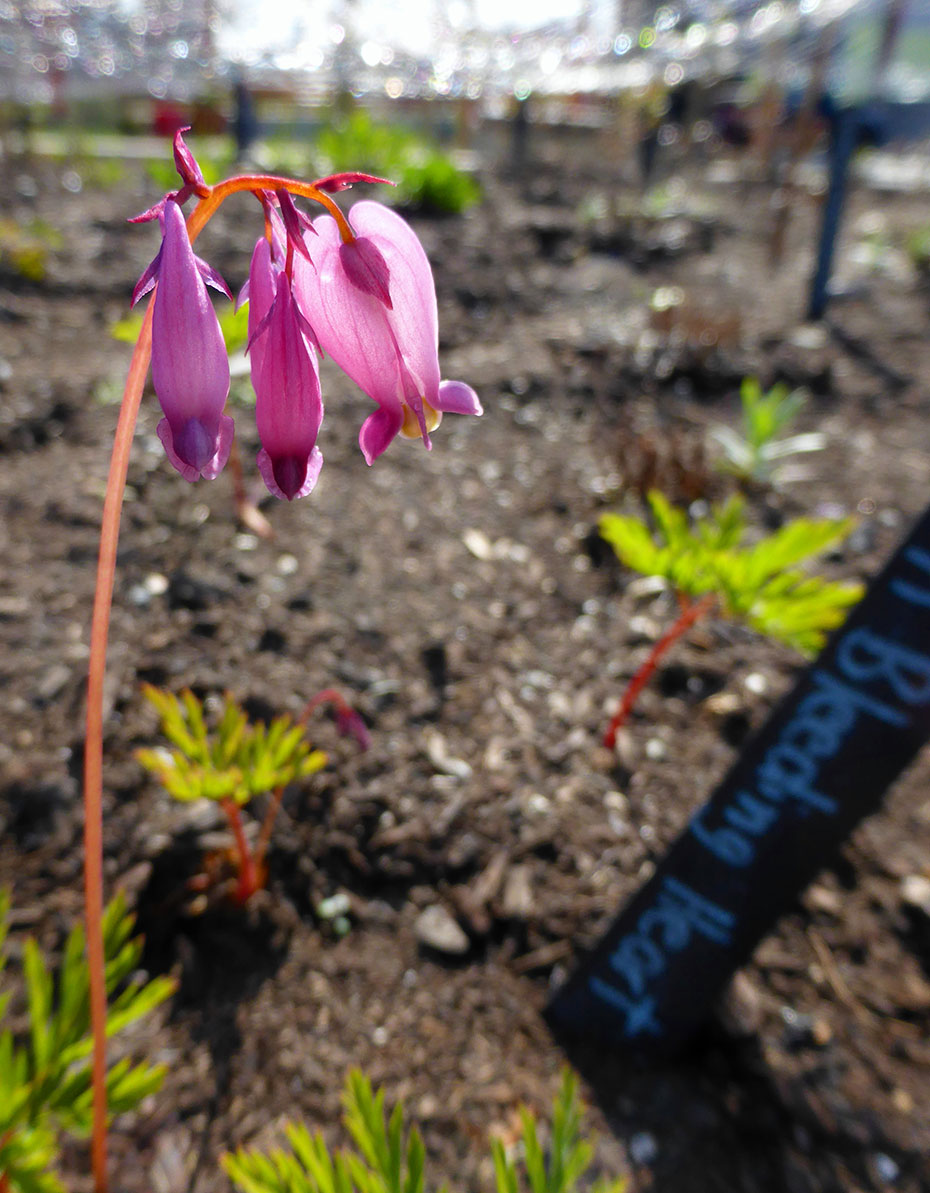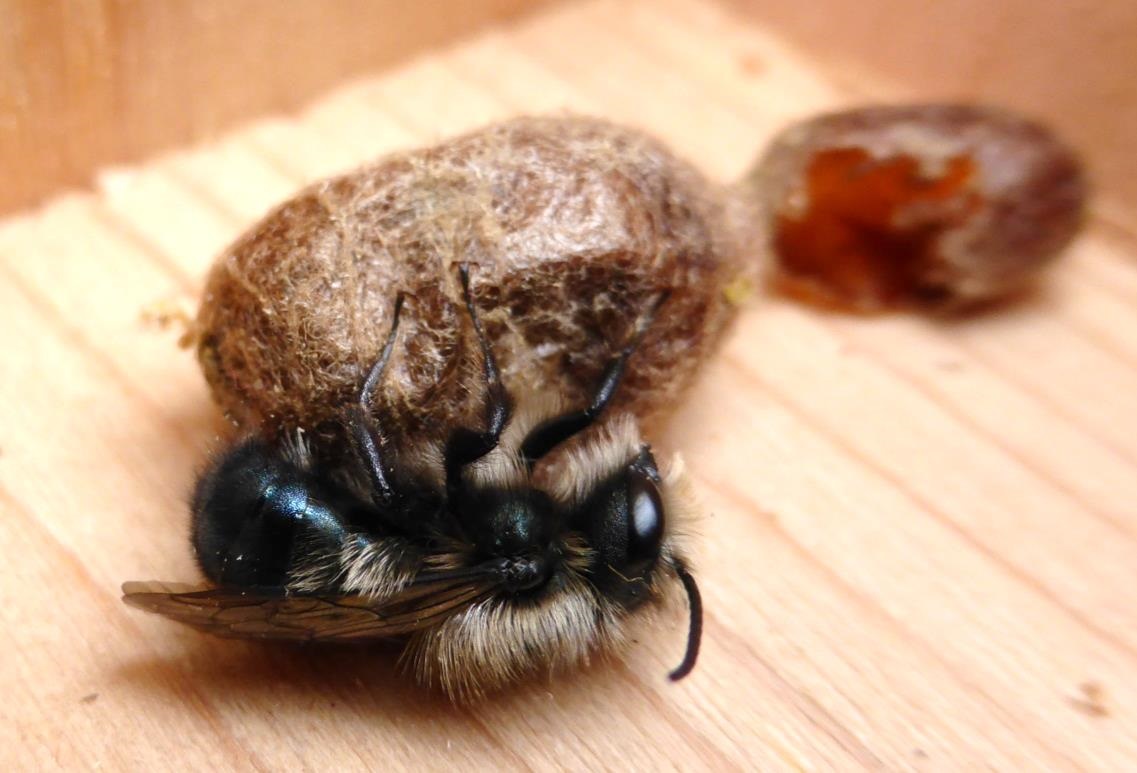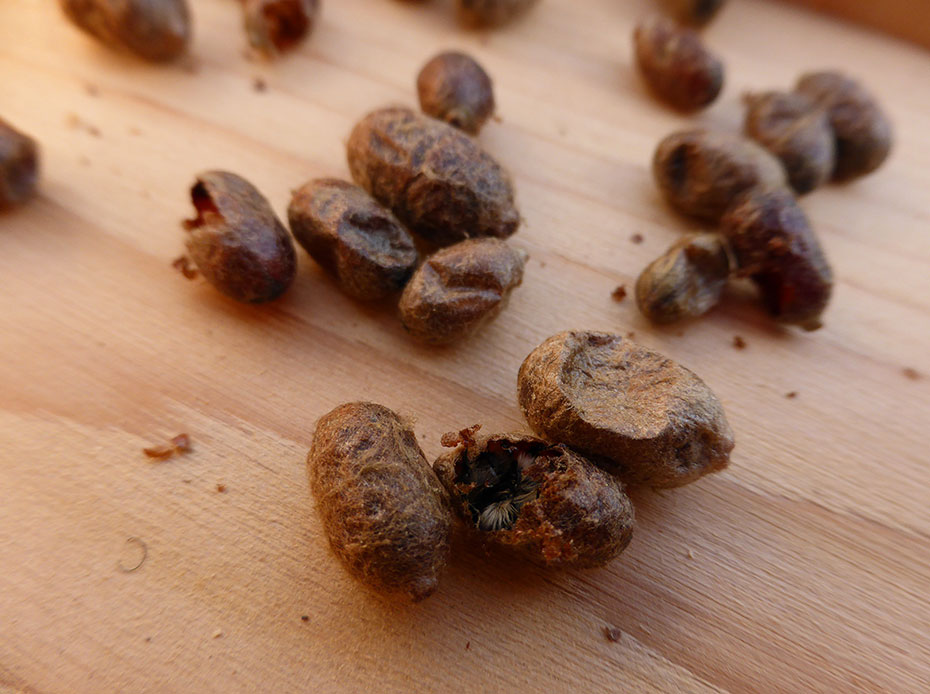 Spring is in the air and so is the buzz of busy bees and other important pollinators in the Ken Spencer Science Park. While we grumble about the rain and continue our countdown for the summer sun, important insects are hard at work, embracing the warmer days and early blooming flowers.
Spring is in the air and so is the buzz of busy bees and other important pollinators in the Ken Spencer Science Park. While we grumble about the rain and continue our countdown for the summer sun, important insects are hard at work, embracing the warmer days and early blooming flowers.
Our honeybees are making their way to and from their hives on the Green Roof and the Search: Sara Stern Gallery and can be seen visiting the flowering plants in the park where they sip on nectar and fill their pollen baskets. The pollen basket is a specialized area on the hind leg where they store the pollen that they carry back to the hive. There have been other pollen-loving visitors in the last few weeks as well. Bumblebees, which are a pudgier, fluffier variety of bee than the honeybee, have been busy around the cherry blossoms, and a few wasps have been seen visiting our flowers. We’ve even had a beautiful Mourning Cloak butterfly dance its way through the park one sunny afternoon. This species of butterfly overwinters as an adult, wedging itself into crevices of loose bark and dead wood, waiting for the first warm days and earliest flowers to take its first spring flight.
 One of the insect allies we’re most excited about this spring is the mason bee. After spending a winter dormant in their insulating cocoon, our mason bees emerged to embrace their first meal in many months. The males emerged first and patiently waited for the females, who take longer to wake up from their winter slumber but are ready to mate very shortly after.
One of the insect allies we’re most excited about this spring is the mason bee. After spending a winter dormant in their insulating cocoon, our mason bees emerged to embrace their first meal in many months. The males emerged first and patiently waited for the females, who take longer to wake up from their winter slumber but are ready to mate very shortly after.
If we’re lucky, the females will stick around the park and use the bee home we’ve provided to lay their eggs. When we think of bees we often think of bee colonies living in hives, but in fact most bee species are solitary. Mason bees are no exception, and once the female has laid her egg surrounded by food provisions in a narrow hole or tube, she blocks off the hole and moves on. If all goes well, the egg will hatch, the larva will consume the food stash surrounding it, and it’ll start to build its cocoon and start the cycle again.
 As you can probably guess, we get really excited about pollinators visiting our flowers. Not only are pollinating animals vital to our food system, they’re also a pleasure to watch. Our newly planted Pollinator Bed, full of native plant species to attract a diversity of pollinators to our gardens, has its first flowers blooming—beautiful Western Bleeding Hearts. As the plants in this bed continue to grow and bloom, we hope it is visited by many pollinating insects and maybe even a few hummingbirds! Next time you’re in the Ken Spencer Science Park, take a moment to not only stop and smell the flowers, but also to take a look for any hardworking critters sipping on nectar or collecting pollen.
As you can probably guess, we get really excited about pollinators visiting our flowers. Not only are pollinating animals vital to our food system, they’re also a pleasure to watch. Our newly planted Pollinator Bed, full of native plant species to attract a diversity of pollinators to our gardens, has its first flowers blooming—beautiful Western Bleeding Hearts. As the plants in this bed continue to grow and bloom, we hope it is visited by many pollinating insects and maybe even a few hummingbirds! Next time you’re in the Ken Spencer Science Park, take a moment to not only stop and smell the flowers, but also to take a look for any hardworking critters sipping on nectar or collecting pollen.
Ask a staff member to point out our mason bee home and our Pollinator Bed so you can experience them for yourself. If you’re keen to get involved in the amazing lives of bees, be sure to come check out our beekeeper friends from Hives for Humanity.